
Contrast Ratio
Put simply, the contrast ratio of a display is ratio of the brightest possible white value compared to the darkest possible black value. It is a significant factor to consider when purchasing a LCD display, as the greater the contrast ratio, the sharper images will appear.Most desktop TFT monitors have a contrast ratio of between 300:1 and 600:1 while a typical LCD TV will raise that to between 800:1 and 1200:1. Plasma TVs can reach up to 4000:1. To demonstrate contrast ratio, let's look at the Viewsonic VX924 we recently reviewed, boasting a contrast ratio of 550:1.
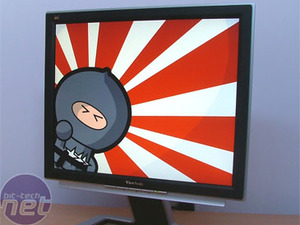
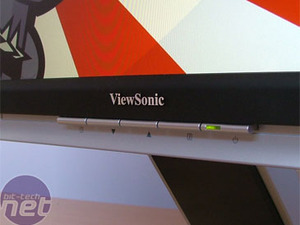
This image has a mixture of pure white and jet black, requiring the greatest contrast from the monitor. The brightest the white value can be is 550 times brighter than the black value. If you look closely at the photo on the right, you can see that the black is actually anything but black - its colour value is dragged up from 0,0,0 to a murky grey by the bright white of 255,255,255.
Again, showing a bad contrast ratio is very difficult in a web review, as your view is influenced by the contrast ratio of the monitor you are reading this article on right now. However, again, we can exaggerate the differences to simulate the effect.

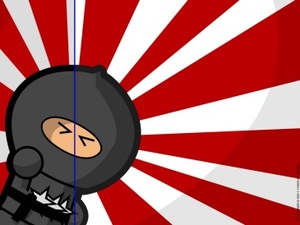
Click for bigger version. Image Copyright Little-Gamers.com
The image on the left is the original wallpaper. The white is pure white, and the black outline on the ninja is jet black. The image on the right is a composite of the two extremes you may encounter with an LDR display, simulated in Photoshop. Left of the blue line, the display brightness is turned down in an effort to achieve pure blacks. As a result, the peak brightness of the white areas is dragged downwards, resulting in an off-white grey colour. Right of the blue line is the exact opposite: you whack the brightness all the way up in order to achieve white whites, and as a result, you get the grey blacks we saw in the first photos. You can click for larger copies to see the differences up close.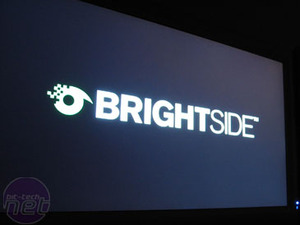
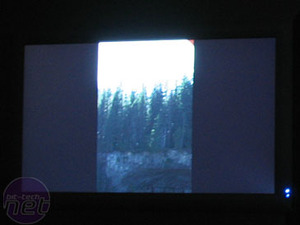
Anyone who owns or uses a common LCD TV, either for work, play or home theatre use, will be familiar with this scene - these photos were taken on a US$2000 37" LCD HDTV with a contrast ratio of 1000:1. Despite the fact that the image calls for jet black in both of these images, such is the power of the back light that the black pixels in the display cannot adequately block the light. The result, once again, is grey rather than black, ruining the intended image and causing enthusiasts to tear their hair out in frustration at the inadequate contrast ratio.
If this is what we get at 1000:1, and a plasma screen is only marginally better at a claimed 4000:1, what then would you say if I showed you a display with a contrast ratio of 200,000:1? Let me introduce the BrightSide DR37-P: the world's first Extreme Dynamic Range Display.

MSI MPG Velox 100R Chassis Review
October 14 2021 | 15:04








Want to comment? Please log in.